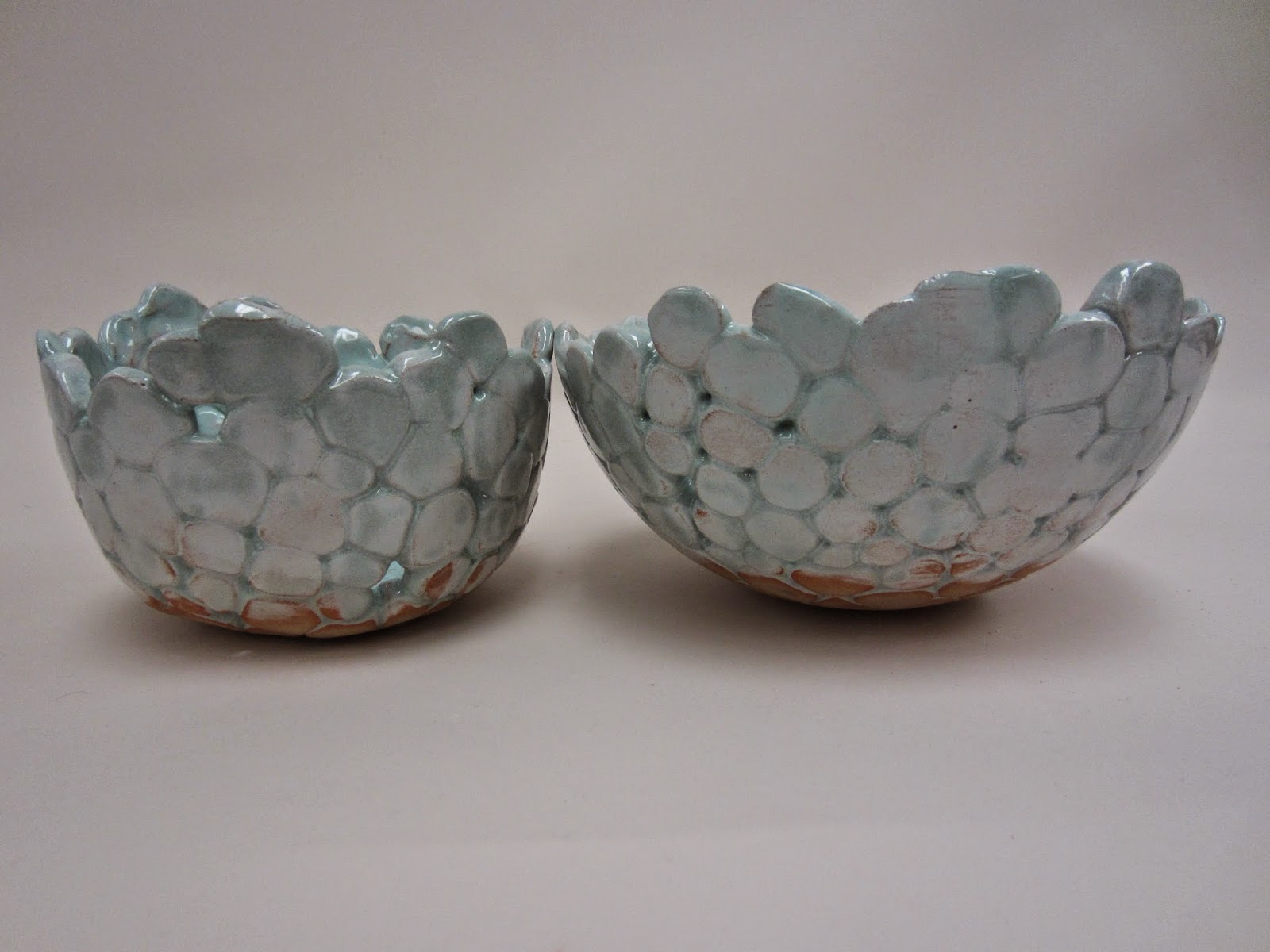Melissa DeMaagd-Bia
Portfolio
Ceramics
Table of Contents
Artist Statement
Bowls (spheres, coils)
Correspondence Bowls
Scar Series II
Fragility Bowls II
Fragility Bowls III
Slab Bowls and Plates
Artist Statement
Memory and personal experience influence this work. Exploring the notion of
leaving marks and a reference to personal experience are evident. This work aims to convey emotions of healing and scars, to explore fragility, imperfections, and continuity. The medium of clay is elastic, flexible, malleable and free. It is fragile and imperfect. The surface of clay responds to touch.
Art lets you see the world in a new way, it asks you to pay attention. Creativity is not a noun, or even a verb. It is a place, a space, a gathering, a union. For many people chaos is something to be avoided but as artists we seek it in order to turn it into something beautiful, sustainable, and lasting. Clay has a durability after it survives firing, from a soft to a permanent quality, there is a resiliency in in character.
Art helps express emotions and can be an outlet for healing. There is something so intimate and vulnerable about art making and mark leaving. Just as clay is forgiving, it is also reclaimable, it has a redeeming quality. As a teacher, I want to help students express their emotions through art and creating. I hope that art can be healing for all of us.
Bowls (spheres, coils)
Media: Ceramic, glaze, fabric
These bowls are an exploration of spheres and coils and combining the two techniques. I experimented with different glazes. These explore continuity, the bringing together of things, in life can never be perfectly attained. There are pieces missing and these imperfections give character to these pieces.
Glaze: DCB 9 Cone 10, Dolomite 12.0, Colmanite 12.0, Whiting 5.6, Sopaspar 32.0, Ballclay 14.4, Silica 24.0--100.0, Rutile 5%
SCPG 5 Cone 9, Dolomite 9.6, Colemanite 6.1, Whiting 9.8, Cornwall stone 45.2, Kaolin 19.7, Silica 9.6, Copper Carbonate 3%
SCPG 9 Cone 9, Dolomite 9.6, Colemanite 6.1, Whiting 9.8, Cornwall stone 45.2, Kaolin 19.7, Silica 9.6, Rutile 5%
Bjorn’s Robins Egg Blue Cone 6
Correspondence Bowls
Media: Ceramic, glaze
These bowls have letters that were written to me inscribed on them. By writing them into clay there is a permanent quality to the words. When I was inscribing the words into the bowls they were very fragile and even fell apart. Now they have survived firing and intense heat and are very durable. They are very personal and intimate. By writing them out, I could reflect and process the words.
Glaze: Mung Cone 10
Scar Series II
Media: Ceramic, glaze, gauze
My scar pieces are evidence of chaos and healing. They seek out the beauty in the chaos. Many of us have been sexually abused in our growing up years. These scar pieces are an exploration of how we see our own imperfections and our reaction to them. These scar pieces were inspired by the damage but also the healing process. The scars left by abuse are not just physical but emotional as well. Scars show healing and resiliency. They also show survival and strength.
Glaze: DCB 9 Cone 10, Dolomite 12.0, Colmanite 12.0, Whiting 5.6, Sopaspar 32.0, Ballclay 14.4, Silica 24.0--100.0, Rutile 5% SCPG 5 Cone 9, Dolomite 9.6, Colemanite 6.1, Whiting 9.8, Cornwall stone 45.2, Kaolin 19.7, Silica 9.6, Copper Carbonate 3% SCPG 9 Cone 9, Dolomite 9.6, Colemanite 6.1, Whiting 9.8, Cornwall stone 45.2, Kaolin 19.7, Silica 9.6, Rutile 5%
Fragility Bowls II
Fragility Bowls II
Media: Ceramic, glaze The bowl series is about fragility and imperfections. The folds and thin walls at the top of the bowls reference female forms. The drips and pooling of the glaze suggests imperfections. My focus and research have included the misrepresentation of women in galleries. Glaze: DCB9, Cone 10, Dolomite 12.0, Colmanite 12.0, Whiting 5.6, Sopaspar 32.0, Ballclay 14.4, Silica 24.0--100.0, Rutile 5%
Fragility Bowls III
Media: Ceramic, glaze The bowl series is about fragility and imperfections. The folds and thin walls at the top of the bowls reference female forms. The drips and pooling of the glaze suggests imperfections. My focus and research have included the misrepresentation of women in galleries.
Glaze: Tomoku Black, exact recipe unknown
Slab Bowls and Plates
Media: Ceramic, glaze This work is about the coming together of things. The rips and folds resemble scars and wounds. The green represents growth and healing. There is a certain fragility in these pieces and movement within these pieces. The glaze runs and moves. There is beauty in the raw clay next to the glaze. Glaze: Warm Jade Cone 6























